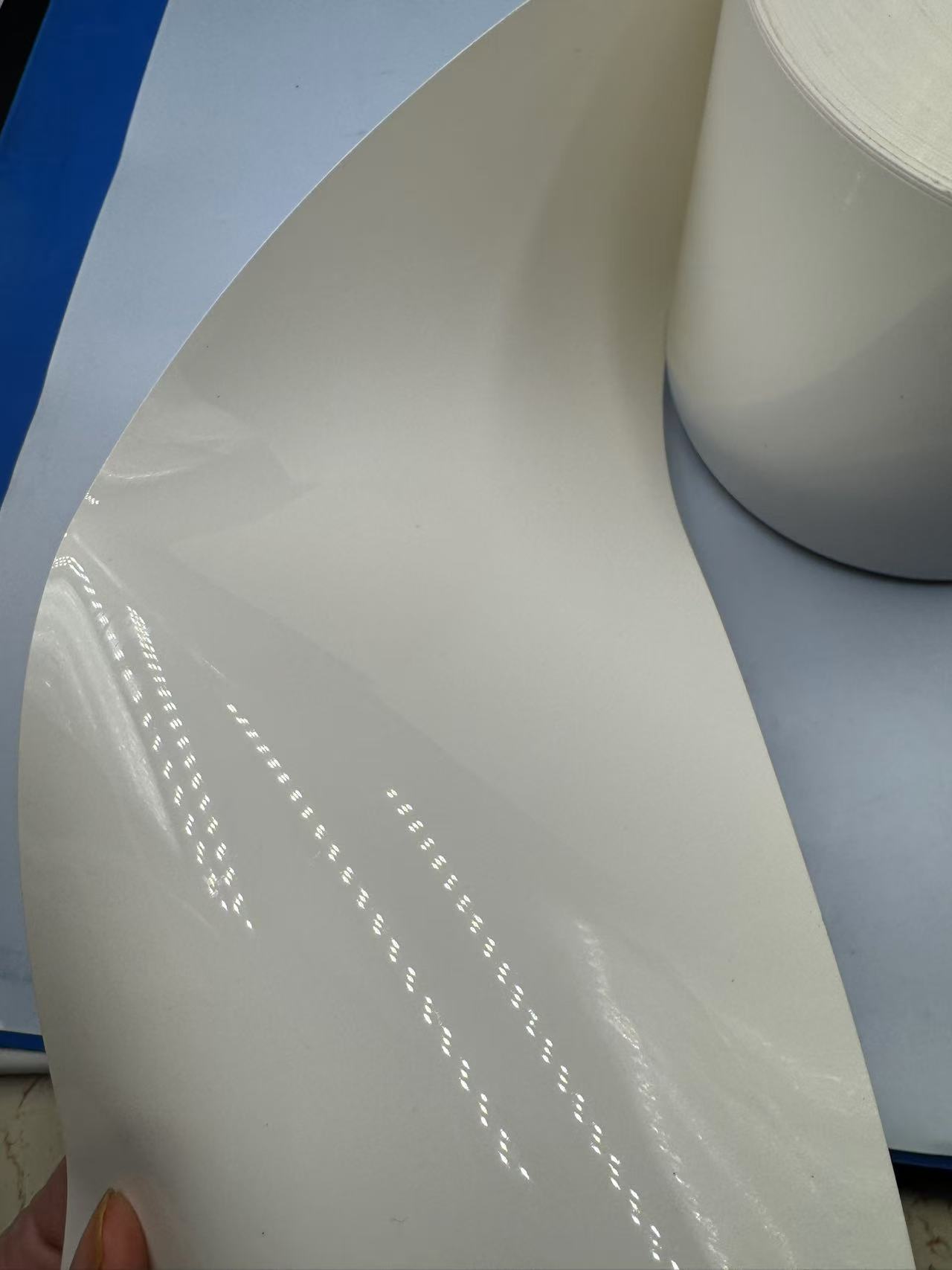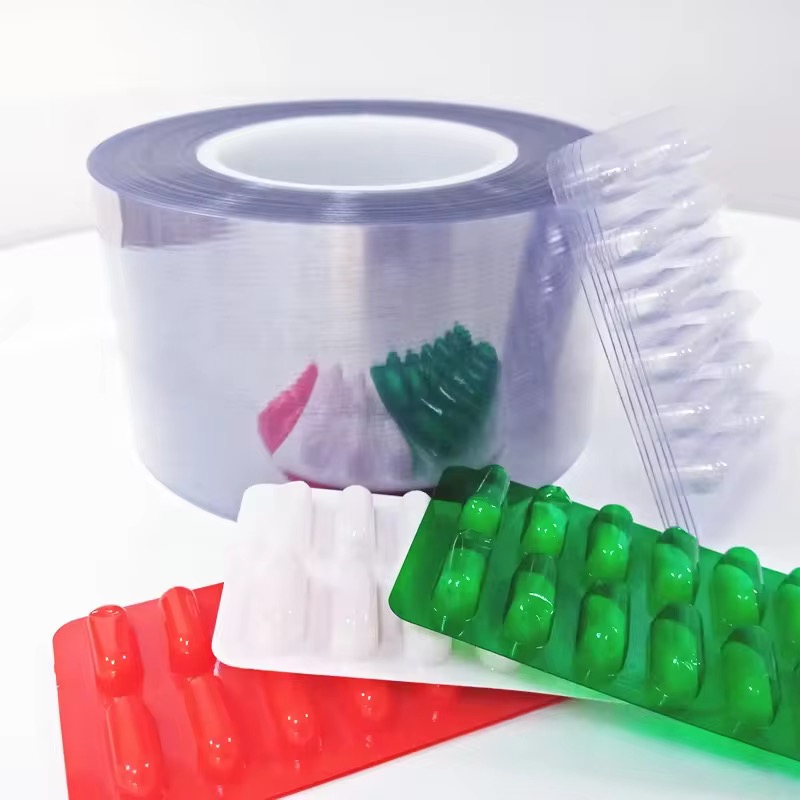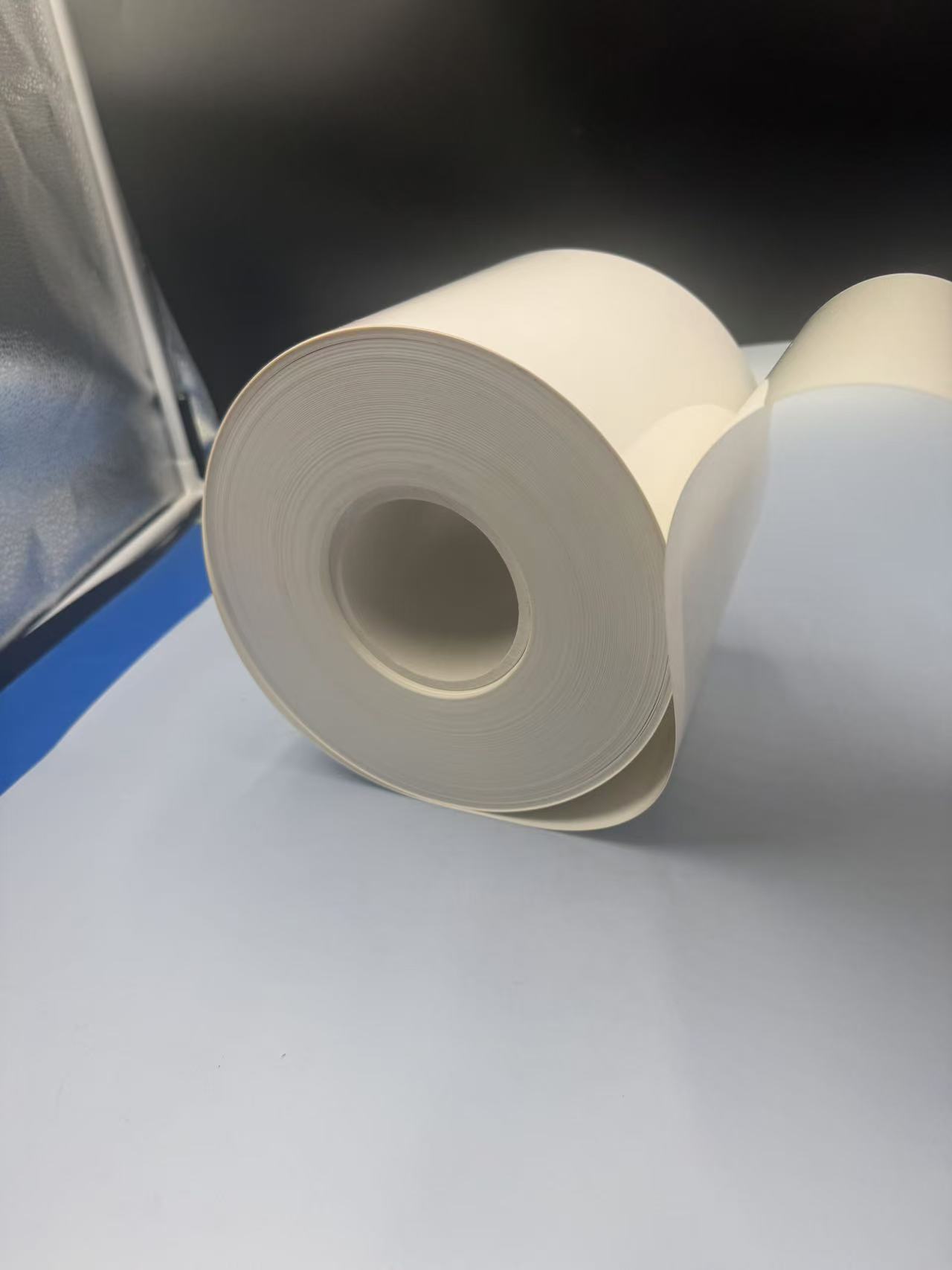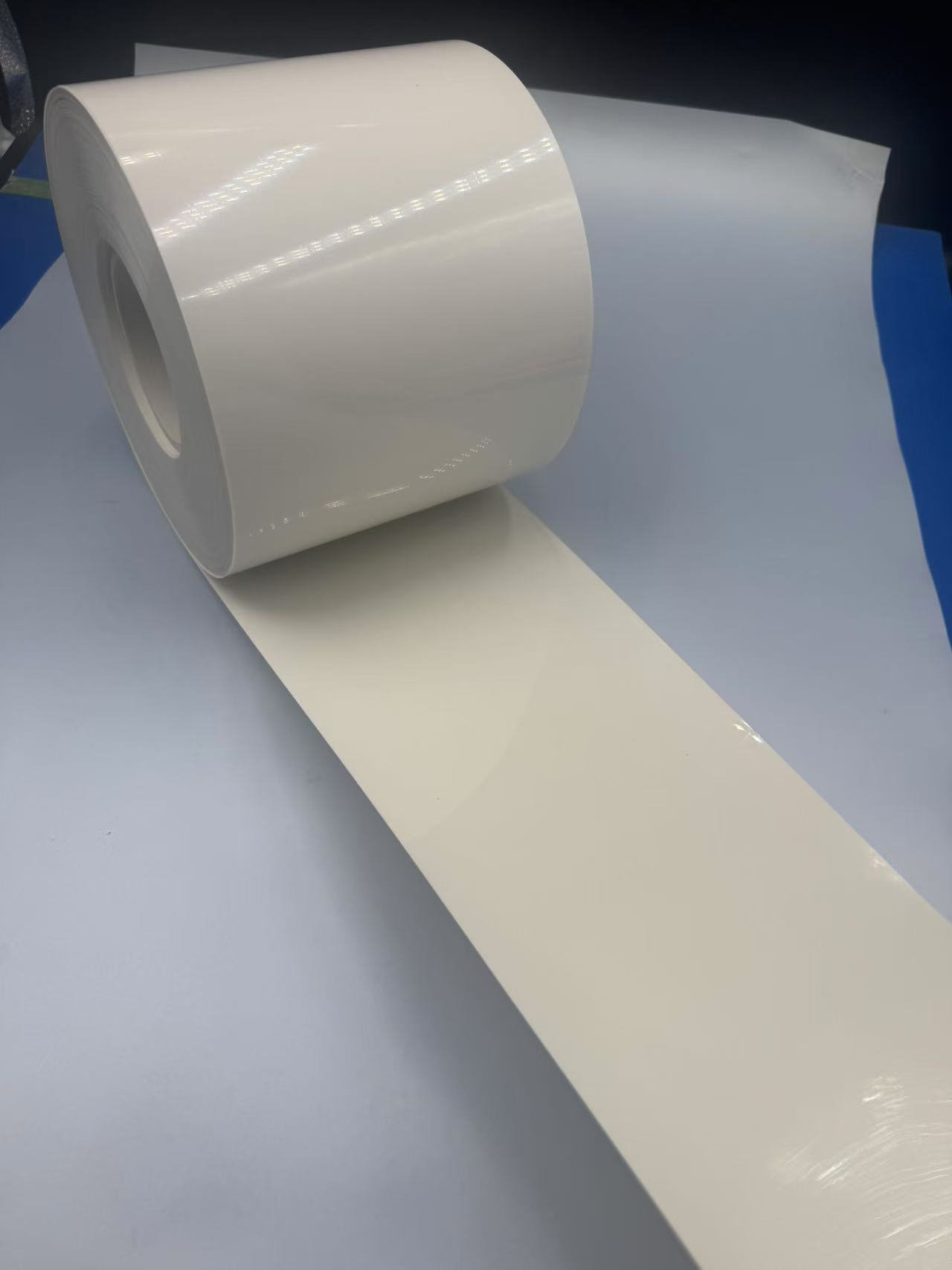Exploring the Properties of White PVC Film and Its Role in Pharmaceutical Packaging
2 week agoWhite PVC film has carved a significant niche in the realm of pharmaceutical packaging, prized for its blend of functionality, protective qualities, and aesthetic appeal. This opaque variant of polyvinyl chloride (PVC) film stands out for its ability to shield sensitive medications from environmental factors while offering a clean, professional look. In this article, we’ll delve into the defining characteristics of white PVC film and examine its practical applications in the pharmaceutical industry, supported by evidence and detailed examples.

Key Characteristics of White PVC Film
- Opacity and Light Protection
Unlike its transparent counterpart, white PVC film is designed to block light transmission, a critical feature for pharmaceuticals. Many drugs, such as vitamins, antibiotics, and certain biologics, degrade when exposed to ultraviolet (UV) or visible light. Research indicates that light-sensitive compounds can lose up to 50% of their potency within hours of exposure. White PVC film, with its high opacity, acts as a barrier, ensuring that medications retain their efficacy throughout their shelf life.
- Excellent Barrier Properties
White PVC film offers robust protection against moisture, oxygen, and contaminants—key factors that can compromise drug stability. With a water vapor transmission rate (WVTR) as low as 3–5 g/m²/day (depending on thickness), it outperforms many alternative materials in humid conditions. This barrier capability is essential for hygroscopic drugs like aspirin or effervescent tablets, which can degrade or lose form when exposed to moisture. - Mechanical Strength and Durability
Available in thicknesses ranging from 150 to 400 microns, white PVC film combines flexibility with impressive tensile strength, typically around 45–55 MPa. This durability ensures that it can withstand the rigors of manufacturing, transportation, and handling without tearing or puncturing. Its resilience makes it suitable for both rigid blister packs and flexible wraps, safeguarding contents from physical damage. - Thermal Stability and Processability
White PVC film maintains its integrity across a moderate temperature range (typically -10°C to 60°C), making it compatible with standard pharmaceutical processing techniques like thermoforming and sealing. Its ability to be easily molded into precise shapes—such as cavities for tablets—streamlines production while ensuring a snug fit around each dose. This property reduces waste and enhances packaging efficiency. - Customizable Surface and Appearance
The smooth, white surface of PVC film provides an ideal canvas for branding, labeling, and regulatory information. It accepts high-quality printing via techniques like offset or screen printing, allowing manufacturers to include dosage instructions, barcodes, and expiration dates with clarity. The opaque white finish also lends a professional, hygienic appearance, reinforcing consumer confidence in the product’s quality.
Applications of White PVC Film in Pharmaceutical Packaging
White PVC film’s unique attributes make it a staple in pharmaceutical packaging, where safety, stability, and compliance are paramount. Below, we explore its specific uses, enriched with examples and insights.
- Blister Packaging for Tablets and Capsules
Blister packs are a cornerstone of modern pharmaceutical delivery, and white PVC film is a preferred material for their construction. Thermoformed into individual cavities, the film encases tablets or capsules, pairing with an aluminum foil backing to create a tamper-evident, airtight seal. The opacity of white PVC film protects light-sensitive drugs like ibuprofen or statins, while its strength prevents crushing during transit.
For instance, a leading generic drug manufacturer adopted white PVC film for their anti-inflammatory medication line. The switch reduced light-induced degradation by 40%, extending shelf life and cutting returns due to spoilage—an outcome verified by stability testing over 12 months.
- Unit-Dose Packaging for Hospitals
In institutional settings like hospitals, white PVC film is used to create unit-dose packs, ensuring accurate dispensing and reducing medication errors. Each dose is sealed in a small, pre-formed pocket, labeled with critical details like drug name and strength. The film’s moisture resistance is particularly valuable here, as hospital storage conditions can vary widely. A study of unit-dose systems found that PVC-based packaging reduced dispensing errors by 15% compared to manual methods, highlighting its reliability.
Picture a busy hospital pharmacy: nurses rely on these white PVC packs to quickly identify and administer antibiotics to patients, confident that the contents remain uncontaminated and potent.
- Strip Packaging for Sensitive Formulations
Strip packaging, where tablets are sealed between two layers of material, often employs white PVC film for its protective qualities. This method is ideal for moisture-sensitive or oxygen-sensitive drugs, such as certain chemotherapy agents or probiotics. The film’s barrier properties prevent ingress of air and water, while its opacity shields the contents from light. A pharmaceutical company reported that using white PVC film for their probiotic strips increased product stability by 25%, as confirmed by microbial assays after six months of storage.
- Overwraps for Secondary Packaging
Beyond primary packaging, white PVC film serves as an overwrap for boxes or trays of pharmaceuticals, adding an extra layer of protection during shipping and storage. For example, vials of injectable drugs or pre-filled syringes are often grouped in trays and wrapped in white PVC film to guard against dust, humidity, and UV exposure. The film’s durability ensures that the overwrap remains intact even after long-distance transport, while its white color maintains a sterile, clinical aesthetic.
A vaccine distributor once used white PVC film to overwrap trays of temperature-sensitive flu shots. The film’s insulation properties helped maintain stability during a 48-hour journey, with no reported losses due to environmental exposure.
- Tamper-Evident Seals and Labels
Security is a top priority in pharmaceuticals, and white PVC film excels in creating tamper-evident seals. Shrink bands or perforated strips made from this material can be applied to bottle caps or blister pack edges, signaling any unauthorized access. The film’s strength resists tearing without clear evidence of tampering, meeting regulatory standards like those set by the FDA or EMA. In one case, a painkiller brand introduced white PVC tamper bands, reducing counterfeiting incidents by 30% within a year, as tracked by market surveillance.
Benefits in Safety, Compliance, and Efficiency
White PVC film aligns seamlessly with the pharmaceutical industry’s stringent demands. Its light and moisture barriers ensure drug stability, a non-negotiable requirement under Good Manufacturing Practices (GMP). The film’s compatibility with automated packaging lines—capable of processing up to 500 blisters per minute—boosts production efficiency, lowering costs for manufacturers. Moreover, its recyclability in specialized facilities addresses sustainability concerns, with some producers now offering films containing up to 20% post-industrial recycled PVC.
A practical example comes from a mid-sized pharma company that switched to white PVC film for their antihypertensive drug blisters. The result was a 15% reduction in packaging time and a 10% decrease in material costs, all while meeting EU pharmacopeia standards for light and moisture protection.

Challenges and Considerations
While white PVC film offers numerous advantages, it’s not without limitations. Its thermal range restricts its use in high-temperature sterilization processes, making it less suitable for certain sterile injectables. Environmental concerns also linger, as improper disposal can contribute to plastic waste, though recycling initiatives are mitigating this issue. Manufacturers must balance these factors against the film’s benefits, often pairing it with complementary materials like aluminum for enhanced protection.
Conclusion
White PVC film stands as a versatile and dependable solution in pharmaceutical packaging, marrying protective prowess with practical usability. Its ability to shield drugs from light, moisture, and physical damage ensures that patients receive safe, effective medications, while its processability and aesthetic appeal streamline production and enhance marketability. From blister packs to tamper-evident seals, this material proves its worth in a field where precision and trust are paramount. As recycling technologies advance and industry needs evolve, white PVC film is well-positioned to remain a vital tool in safeguarding health, one package at a time.

Similar Video Recommendation
You May Also Like
If you are interested in the product, contact Bossgoovideo.com for more information
- *To:
- Shandong Top Leader Plastic Packing CO., LTD
- *Message:
-
Submit
Main Product:
PVC Rigid Film,
PET PETG Rigid Film ,
HIPS Film,
PC Film,
PP Film,
Other plastic packaging products
You May Also Like























